Mmmm, French fries and cherries. What do these two things have in common, besides being delicious of course? They are examples of Washington state exports to South Korea that have grown over the past two years thanks to the U.S.-Korea Free Trade Agreement (KORUS).
Saturday, March 15, marked the two-year anniversary of the implementation of KORUS, and as the most loyal State of Trade readers and WCIT members may remember, WCIT advocated relentlessly for passage of KORUS back in 2011. As a result (well, at least we hope we played a major role!) the entire Washington congressional delegation voted in favor of the trade agreement.
Now two years later, it’s worth taking a look at what has happened with Washington-Korea trade with KORUS in place. Admittedly, since it takes five years for all tariffs to be phased out, and a host of other factors have impacted Korea’s imports in 2012 and 2013, examining the effects of KORUS is complicated. For instance, U.S. goods exports to Korea have dropped over the past two years, resulting in the trade deficit increasing by more than half. Washington state goods exports to Korea increased in 2012 to a record of $3.4 billion, but dropped this year to $2.6 billion. However, it would be premature and inaccurate to judge the agreement based on the overall numbers for the first two years and conclude that the agreement is detrimental to U.S. or Washington state trade.
If you look closer, you’ll realize that the export of U.S. products that have experienced tariff reductions or eliminations in Korea actually increased by 6.9 percent in 2013, and in some cases by over 50 percent. Washington state potato and cherry growers have already benefited from the trade deal, as Korea dropped the 18 percent tariff on potatoes and 24 percent tariff on cherries. As a result, sales of frozen potato products, most of which were from Washington and Oregon, increased by 57 percent to $83 million in 2013, and exports of cherries rose 88 percent. Washington’s exports of aluminum, paper, fish, dairy, stone & cement, pharmaceuticals, metals and many other products have all increased steadily over the last two years. Services exports have also grown, and the U.S. services surplus with Korea increased by 8.9 percent.
So why have overall exports dropped? It has largely been due to Korea’s slowed economic growth and declining demand for imports. Case in point: Korea’s imports from the rest of the world, not just the U.S., dropped significantly from $5 billion in 2012 to $4 billion in 2013, signifying that the drop in U.S. exports to Korea had nothing to do with KORUS. In contrast, U.S. consumer demand of Korean products shot up in 2013, increasing the deficit. Additionally, the export of corn, which was one of the largest U.S. exports to Korea, nose-dived over the last two years due to a drought that reduced yields.
As you can see, trade flows are impacted by countless factors, making it impossible to judge a trade agreement after only two years, especially since many tariffs have not yet been phased out. In addition, Korea has had some problems with implementation of KORUS, and some of Korea’s discriminatory regulations and other barriers will have to be addressed. Overall, however, Korea has opened its market much more to U.S. business and businesses across many sectors from wine to manufacturing agree that it is becoming easier to do business there.
As more and more tariffs are phased out and other barriers are broken down, KORUS will continue to provide increased benefits to Washington employers. As pointed out above, the growth in Washington exports for products that have experienced tariff elimination demonstrate that KORUS is a great model for expanding and strengthening our trade relationship with Korea.
It’s about dinner time and all this talk of Washington potatoes and cherries has got me craving some French fries and a cherry milk shake…does anyone have a suggestion for a great diner?

